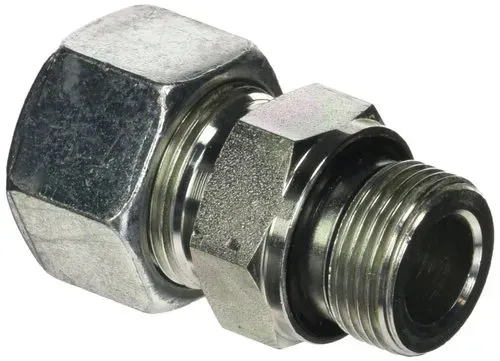Contact : +91-79045 61980 | Email: hydrofitengineers@gmail.com

Hydraulic male stud coupling fittings are used in hydraulic systems to connect pipes or hoses together. These fittings come in various sizes and configurations to suit different hydraulic applications. A male stud coupling fitting typically consists of a threaded male stud that is attached to a pipe or hose and a coupling nut that is used to connect the male stud to a female fitting. In this article, we will discuss the various aspects of hydraulic male stud coupling fittings in detail.
Types of Hydraulic Male Stud Coupling Fittings
Hydraulic male stud coupling fittings come in various types based on their configuration and size. Some of the commonly used types of hydraulic male stud coupling fittings are as follows:
Straight Stud Coupling Fittings
Straight stud coupling fittings are the most commonly used hydraulic fittings. They consist of a straight male stud that is threaded on one end and is attached to a pipe or hose on the other end. The coupling nut is used to connect the straight male stud to a female fitting.
Elbow Stud Coupling Fittings
Elbow stud coupling fittings are used in applications where the hydraulic system requires a change in direction. They consist of a male stud that is threaded on one end and is attached to a pipe or hose on the other end. The coupling nut is used to connect the elbow male stud to a female fitting.
Tee Stud Coupling Fittings
Tee stud coupling fittings are used in applications where the hydraulic system requires a connection to three pipes or hoses. They consist of a male stud that is threaded on one end and is attached to a pipe or hose on the other end. The coupling nut is used to connect the tee male stud to two female fittings.
Cross Stud Coupling Fittings
Cross stud coupling fittings are used in applications where the hydraulic system requires a connection to four pipes or hoses. They consist of a male stud that is threaded on one end and is attached to a pipe or hose on the other end. The coupling nut is used to connect the cross male stud to three female fittings.
Bulkhead Stud Coupling Fittings
Bulkhead stud coupling fittings are used in applications where the hydraulic system requires a connection through a panel or a wall. They consist of a male stud that is threaded on one end and is attached to a pipe or hose on the other end. The coupling nut is used to connect the bulkhead male stud to a female fitting on the other side of the panel or wall.
Flange Stud Coupling Fittings:
Flange stud coupling fittings are used in applications where the hydraulic system requires a connection to a flanged pipe or equipment. They consist of a male stud that is threaded on one end and is attached to a flange on the other end. The coupling nut is used to connect the flange male stud to a female flange fitting.
Materials Used for Hydraulic Male Stud Coupling Fittings
Hydraulic male stud coupling fittings are made of different materials based on their application and working conditions. Some of the commonly used materials are as follows:
Mild Carbon Steel: Steel is the most commonly used material for hydraulic male stud coupling fittings. It is strong, durable, and can withstand high pressure and temperature. Steel fittings are used in applications where the hydraulic system requires high strength and resistance to corrosion.
Stainless Steel: Stainless steel is used in applications where the hydraulic system requires resistance to corrosion and high temperature. Stainless steel fittings are used in food processing, chemical processing, and pharmaceutical industries.
Brass: Brass is used in applications where the hydraulic system requires resistance to corrosion and low pressure. Brass fittings are used in pneumatic and hydraulic systems.
Aluminum: Aluminum is used in applications where the hydraulic system requires lightweight fittings. Aluminum fittings are used in aerospace, automotive, and marine industries.
